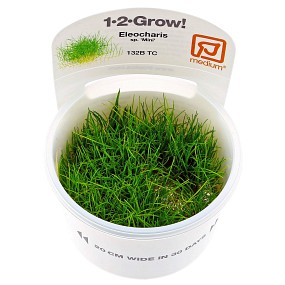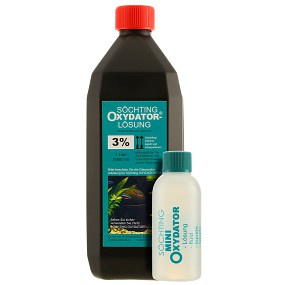Every once and again, hydra come up in aquariums. These creatures are reminiscent of a skinless umbrella or maybe a tiny coral. Actually, a comparison with corals is not that far-fetched at all, because this freshwater polyp belongs to the same genus as corals, the so-called cnidaria. A lot of misinformation and alarmism goes around the internet concerning these actually very fascinating, lesser creatures. We’ll do our best to bring them a little closer to you.
How do freshwater polyps get into the aquarium, anyway?
First of all, hydra can be introduced by aquatic plants, decoration or (seldom) with fish or invertebrates, especially sitting on snail shells, but also by themselves with the house dust. As a survival strategy, hydra have appropriated the formation of resting eggs, which they produce through sexual reproduction. If the conditions in the habitat become worse, hydra form genitals and begin reproduction by copulation. The resting eggs, produced by this, become part of the house dust after the biotope has dried up. If the aquarium is not hermetically sealed (and for real... which aquarium is?), it may well be that hydra come up even without an existing fish or shrimp population, even though the aquarist might have exclusively used in-vitro plants and brand-new hardscape. And yes, of course you can easily catch yourself a severe case of hydra with live food and especially pond food - meaning self-caught live food from natural bodies of water.
What types are there?
Common types in aquaristics are those hydra native to our region: Chlorohydra (Hydra) viridissima, the green hydra getting its colour from symbiont algae of the genus Chlorella, and Hydra vulgaris, which has a brownish-beige to whitish colour. Hydra grow to sizes between 0,3-1cm, and their tentacles can get up to 2cm long. The green hydra usually stays a little smaller.

How do hydra reproduce?
On the one hand, hydra can multiply asexually by budding, on the other hand, they can reproduce sexually, producing the above-mentioned resting eggs. When budding, a new Hydra sprouts from the body of the adult. When it is big enough, it’ll detach and start its own life.
How do hydra move around?
Hydra are not known for being super motile creatures. They sit and wait for prey. If the environmental conditions are not good enough for them, they are able to release their adhesive “foot” pad from their perch and somersault around, not very quickly, though. Also, a freshwater polyp can form a small bubble of gas under its foot and use the buoyancy to rise towards the water surface.
Are hydra dangerous?
The answer to that is a clear yes and no. Hydra are hunters, have cnidoblasts at the end of their tentacles to paralyze their prey (smaller crustaceans, worms, larvae and similar…), before eating them. There are hydra big enough to conquer a water flea - these specimen are then also capable of catching and eating prey of similar size such as freshly-hatched shrimp larvae or small fish larvae. Hydra are ambush predators and not actively hunting but rather sitting, waiting for the prey to come to them. With the help of their olfactory cells, they perceive the substance glutathione, which is part of animal- and yeast cells and which is released in larger amounts during a nettling. Glutathione causes the tentacles to move towards the hydra’s mouth opening. If protein food is fed near a hydra, this reflex can sometimes be observed as well.
Most hydra are way too small to really threaten the other inhabitants, but it is reasonable to believe that it is at least unpleasant for the shrimp not being able to sit down without getting nettled “thanks” to a carpet of hydra. At a certain severity of freshwater polyp infestation there is certainly a need for action, but you do not need to panic if there’s one or two hydra in your tank. Here, the dear aquarist usually doesn’t have to do anything and a small infestation typically disappears by itself after a while.
Introduction prevention
You can never fully prevent an introduction, since the eggs get into the aquarium through the air. Nevertheless, you can reduce the risk of infestation, if you prevent the transfer from one aquarium to another by having own tools for every tank. A dedicated fish net for every aquarium should be doable. If you don’t want to buy own tweezers and scissors for every tank, you should dip your tools into a saturated saline solution before use. This will kill other germs and parasites as well.
If you want to play it save, pick emerged, potted aquatic plants or - even better - in-vitro plants. These are cultivated in a sterile environment and are guaranteed to be free from pests.

What to do in case of a stronger infestation?
A heavy infestation always means the presence of a lot of food, no difference here between hydra, snails or worms. The aquarist should therefore start with the cause of the problem and not just fight the symptoms (hydra). If many small organisms like cyclops, ostracoda or similar are there, it is problematic that these critters are not just excellent hydra food but also a surefire sign for overfeeding. These little critters are decomposers, taking care of food leftovers. If feeding economically, responsibly and exquisitely, the amount of microorganisms will decrease, and with them - after a short delay - the number of hydra as well. Fine, frosted food goes straight to the hydra so it should be taken care of, that the fish receive this food directly and completely. A feed glass can be a great help here.
Predators such as great pond snails Lymnaea stagnalis are often recommended against hydra, and can help culling the hydra population. You won’t be able to get rid of them completely, and these snails have a reputation of eating aquatic plants, though they rather eat holes in the plants’ leaves than devouring them completely.
Another method is to treat an aquarium with the deworming agents, Flubenol or Panacur. Their active ingredients cause the hydrogen to die off, but they also have a toxic effect on snails and settle in the soil. As a result, they are still active after months. Flubenol in particular is lethal to ALL snails in the aquarium, while Panacur is survived by physidae, Red-rimmed melania and the great ramshorn. An overdose of Panacur may cause malformations and fertility problems in shrimp. Even pomegranate extract has been used successfully against hydra, as well as a lowering of the pH of the aquarium water to less than 4 (the rest of the inhabitants; shrimp, crabs, snails and fish usually do not tolerate this!).
Flubenol and Panacur are only available on prescription from a veterinarian.
It is easy to pick off hydra manually, but it has to be done very carefully: freshwater polyps can regenerate completely from just a few cells. Squishing them or chafing bits off them will INCREASE their population! If hydra are sitting on the aquarium’s panes, it is possible to scrape them off using a bladed window cleaner and suck them away using a hose.
Better and more practical than plucking them off is the method of fogging them with Easy Carbo, lemon juice, hot water or even hydrogen peroxide.

In this case, a syringe charge is deliberately delivered to the hydra. They die or at least let go and fall off the surface, then you should suck them away immediately, in case they recover.